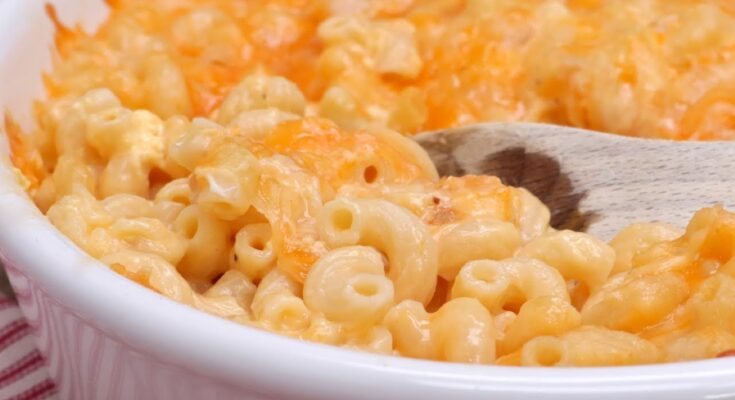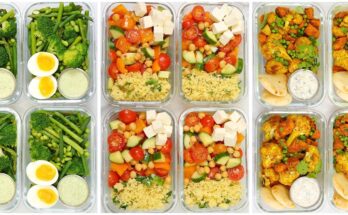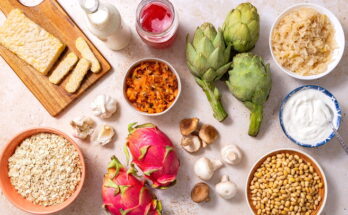Macaroni and Cheese Recipe: Who doesn’t love a good bowl of macaroni and cheese? It’s one of those timeless comfort foods that brings back memories of childhood, cozy dinners, and rainy days.
Whether it’s the creamy texture, the cheesy goodness, or the nostalgic vibes, mac and cheese has a place in many hearts—and kitchens! The best part? You don’t need to rely on boxed versions.
This recipe will walk you through making it from scratch, step by step. Trust me, homemade macaroni and cheese is a game-changer!
Why Homemade Macaroni and Cheese is Better Than Boxed
Sure, the boxed versions are convenient, but nothing compares to making this dish yourself. With homemade mac and cheese, you have full control over the ingredients. Want to use fancy cheeses? Go for it! Prefer a thicker sauce? Adjust the flour-to-milk ratio. Plus, there are no preservatives, artificial flavors, or mystery powders—just pure, cheesy goodness.
Ingredients Needed for Macaroni and Cheese
Before diving into the recipe, let’s talk about what you’ll need:
- Pasta: Elbow macaroni is the classic choice, but shells or cavatappi work too.
- Cheese: A blend of cheddar, Gruyere, and Parmesan gives the best balance of flavor and creaminess.
- Butter and flour: These form the base of the roux (thickening agent).
- Milk: Whole milk is ideal, but half-and-half makes it richer.
- Salt and pepper: For seasoning.
- Optional toppings: Breadcrumbs, crispy bacon, or fresh herbs for added flair.
Essential Kitchen Tools for the Recipe
- Large saucepan or pot: To cook the pasta.
- Whisk: Essential for making the roux without lumps.
- Baking dish (if baking): Use a casserole dish for an oven-finished version.
- Cheese grater: Grate your own cheese for better melting.
Step-by-Step Guide to Making Macaroni and Cheese
Step 1: Boil the Pasta
Start by boiling your pasta in salted water. Cook it until it’s al dente (firm to the bite). This ensures it doesn’t get mushy when you combine it with the cheese sauce. Drain and set aside.
Step 2: Prepare the Roux
In a large saucepan, melt the butter over medium heat. Add the flour and whisk continuously for about 2 minutes until it forms a smooth paste. This step ensures your sauce will be creamy without tasting like flour.
Step 3: Add Milk and Thicken the Sauce
Slowly pour in the milk, whisking as you go. Continue to cook and whisk until the mixture thickens slightly—it should coat the back of a spoon.
Step 4: Stir in the Cheese
Remove the saucepan from heat and stir in your cheese. Add it in batches to prevent clumping. The sauce should be smooth and velvety.
Step 5: Combine the Pasta and Sauce
Add your cooked pasta to the cheese sauce and stir until every piece is coated.
Step 6: Optional Baking Step
If you prefer baked mac and cheese, transfer the mixture to a greased baking dish. Top with breadcrumbs and bake at 350°F (175°C) for 20 minutes or until golden brown.
Choosing the Perfect Cheese Combination
Cheddar is a go-to, but mixing in Gruyere or even mozzarella gives it a unique twist. Parmesan can add a nice salty kick. If you’re feeling adventurous, try smoked gouda or blue cheese.
Baked vs. Stovetop Mac and Cheese
Baked mac and cheese has a crispy, golden top, while stovetop versions are creamier. If you love that crunchy topping, go for the baked route. But if you prefer your mac and cheese ooey-gooey, the stovetop version is the way to go.
Adding Extra Flavors and Mix-ins
You can take your mac and cheese to the next level by adding in bacon, caramelized onions, or jalapenos. A sprinkle of truffle oil also adds a gourmet touch.
Tips for the Creamiest Macaroni and Cheese
- Use freshly grated cheese—it melts better than pre-shredded cheese.
- Cook the sauce on low heat to prevent it from becoming grainy.
- Stir constantly while making the roux to avoid lumps.
Common Mistakes to Avoid
- Overcooking the pasta: It will continue to cook in the sauce.
- Using pre-shredded cheese: It contains anti-caking agents that prevent smooth melting.
How to Store and Reheat Leftovers
Store leftover mac and cheese in an airtight container in the fridge for up to 3 days. Reheat on the stovetop with a splash of milk to restore its creaminess.
Pairing Suggestions for Macaroni and Cheese
Pair your mac and cheese with a crisp salad, roasted vegetables, or garlic bread. A chilled glass of white wine or lemonade also complements the dish well.
Macaroni and Cheese for Special Diets
For gluten-free mac and cheese, use gluten-free pasta and flour. To make it vegan, swap out the dairy products for plant-based alternatives like almond milk and vegan cheese.
FAQs about Macaroni and Cheese Recipe
1. What are the key ingredients for a classic macaroni and cheese recipe?
The essential ingredients for a classic macaroni and cheese include elbow macaroni, cheddar cheese, milk, butter, and flour. You can also add ingredients like salt, pepper, and a dash of paprika for extra flavor.
2. Can I use different types of cheese in my macaroni and cheese?
Absolutely! While cheddar is the traditional choice, you can experiment with other cheeses such as Gouda, Monterey Jack, or mozzarella for different flavors and textures. Mixing several cheeses can create a richer, more complex taste.
3. How can I make my macaroni and cheese creamier?
To achieve a creamier texture, consider adding cream cheese, heavy cream, or evaporated milk to your sauce. These ingredients enhance the richness and creaminess of the dish.
4. Is there a gluten-free version of macaroni and cheese?
Yes, you can make gluten-free macaroni and cheese by using gluten-free pasta and ensuring that all other ingredients are gluten-free. Also, substitute the flour used in the roux with a gluten-free alternative like cornstarch or a gluten-free all-purpose flour.
5. What are some tips for adding a crunchy topping to macaroni and cheese?
For a delightful crunch, sprinkle breadcrumbs, crushed crackers, or panko on top of your macaroni before baking. Drizzle with a little melted butter to help it brown and add a toasty flavor.
6. Can I make macaroni and cheese in advance?
Yes, you can prepare macaroni and cheese ahead of time and refrigerate it. When ready to serve, reheat in the oven or on the stovetop, adding a splash of milk to loosen the sauce if necessary.
7. How can I add more protein to my macaroni and cheese?
To make your dish more filling, consider adding cooked meats such as bacon, ham, or chicken. For a vegetarian option, mix in legumes like cooked lentils or chickpeas.
Conclusion
In wrapping up, homemade mac and cheese stands as a testament to the simple pleasures of cooking. It’s more than just a dish; it’s a heartwarming experience that brings together creamy textures and rich flavors, customizable to your liking.
Whether you opt for a classic cheddar or experiment with a blend of gourmet cheeses, each spoonful promises a comforting embrace. Making mac and cheese at home allows you to control the quality of ingredients, ensuring a healthier and tastier meal.
So, gather your ingredients and let the magic of making this beloved comfort food fill your kitchen with warmth and your dining experience with joy. After all, few dishes can match the universal appeal and satisfying richness of mac and cheese.
References
For those seeking to explore more about crafting the perfect macaroni and cheese dish, the following resources provide insightful information and verification for the recipes and techniques discussed in our article:
- Food Network – Explore a range of macaroni and cheese recipes from various chefs to understand different cooking styles and ingredient variations. Perfect for those looking to expand their culinary skills. Visit Food Network’s Mac and Cheese Recipes.
- Epicurious – Dive into detailed culinary guides and professional tips on making classic comfort foods, including a special focus on macaroni and cheese. This source is ideal for home cooks looking to refine their techniques. Explore Epicurious for Recipes.
- Serious Eats – For a scientific approach to cooking, Serious Eats offers a breakdown of the textures and flavors that make the perfect macaroni and cheese, supported by expert advice and comprehensive cooking techniques. Learn from Serious Eats.
These references will help you achieve a deeper understanding and appreciation of the various ways to prepare macaroni and cheese, enhancing both your knowledge and your kitchen skills.



